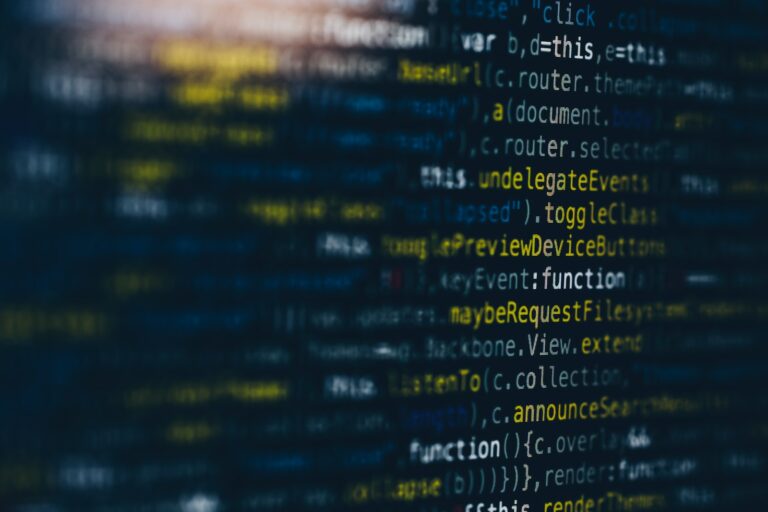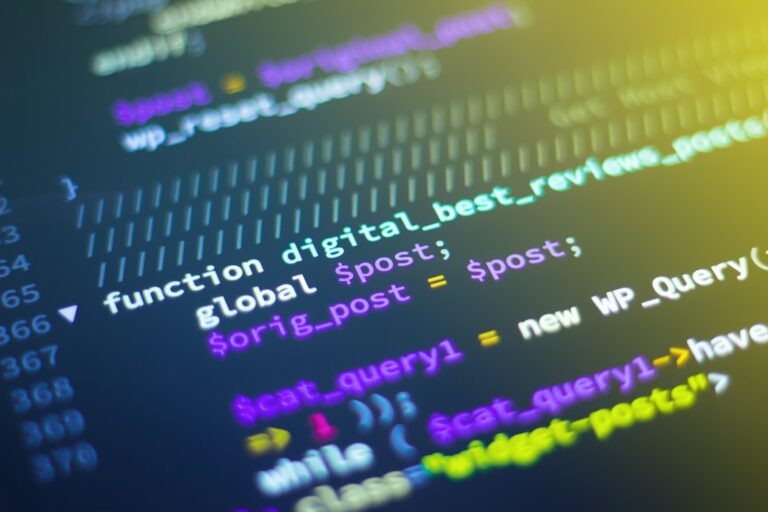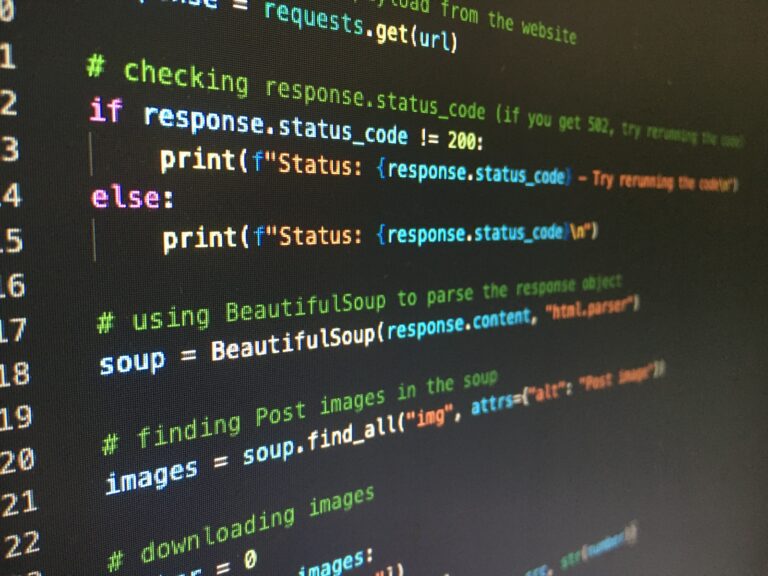In Python, variables are essential elements that allow developers to store and manipulate data. When writing Python code, understanding variable assignment and naming conventions is crucial for effective programming.
Python variables provide a way to assign a name to a value and use that name to reference the value later in the code. Variables can be used to store various types of data, including numbers, strings, and lists.
In this article, we will explore the basics of Python variables, including variable assignment and naming conventions. We will also dive into the different variable types available in Python and how to use them effectively.
Key Takeaways
- Python variables are used to store and manipulate data in code.
- Variable assignment allows developers to assign a name to a value and reference it later.
- Proper variable naming conventions are essential for effective programming.
- Python supports different variable types, including integers, floats, strings, and lists.
Variable Assignment in Python
Python variables are created when a value is assigned to them using the equals sign (=) operator. For example, the following code snippet assigns the integer value 5 to the variable x:
x = 5
From this point forward, whenever x is referenced in the code, it will have the value 5.
Variables can also be assigned using other variables or expressions. For example, the following code snippet assigns the value of x plus 2 to the variable y:
y = x + 2
It is important to note that variables in Python are dynamically typed, meaning that their type can change as the program runs. For example, the following code snippet assigns a string value to the variable x, then later reassigns it to an integer value:
x = "hello"
x = 7
Common Mistakes in Variable Assignment
One common mistake is trying to reference a variable before it has been assigned a value. This will result in a NameError being raised. For example:
print(variable_name)NameError: name ‘variable_name’ is not defined
Another common mistake is assigning a value to the wrong variable name. For example, the following code snippet assigns the value 5 to the variable y instead of x:
y = 5
print(x)NameError: name ‘x’ is not defined
To avoid these mistakes, it is important to carefully review code and double-check variable names and values.
Using Variables in Python
Variables are used extensively in Python code for a variety of purposes, from storing user input to performing complex calculations. The following code snippet demonstrates the basic usage of variables in a simple addition program:
number1 = input("Enter the first number: ")
number2 = input("Enter the second number: ")
sum = float(number1) + float(number2)
print("The sum of", number1, "and", number2, "is", sum)
This program prompts the user to enter two numbers, converts them to floats using the float() function, adds them together, and prints the result using the print() function.
Variables can also be used in more complex operations, such as string concatenation and list manipulation. The following code snippet demonstrates how variables can be used to combine two strings:
greeting = "Hello"
name = "Alice"
message = greeting + ", " + name + "!"
print(message)
This program defines two variables containing a greeting and a name, concatenates them using the plus (+) operator, and prints the result.
Variable Naming Conventions in Python
In Python, proper variable naming conventions are crucial for writing clear and maintainable code. Consistently following naming conventions makes code more readable and easier to understand, especially when working on large projects with many collaborators. Here are some commonly accepted conventions:
| Convention | Example |
|---|---|
| Lowercase | first_name |
| Uppercase | LAST_NAME |
| Camel Case | firstName |
| Snake Case | first_name |
It’s recommended to use lowercase or snake case for variable names as they are easier to read and more commonly used in Python. Camel case is common in other programming languages, but can make Python code harder to read.
Variable names should be descriptive and meaningful. Avoid using abbreviations or single letters, unless they are commonly understood, like “i” for an iterative variable in a loop. Using descriptive names will make your code easier to understand and maintain by you and others.
Lastly, it’s a good practice to avoid naming variables with reserved words in Python such as “and”, “or”, and “not”. Using reserved words can cause errors in your code, making it hard to debug.
Scope of Variables in Python
Variables in Python have a scope, which dictates where they can be accessed and used within a code block. Understanding variable scope is important for writing efficient and effective code.
Local Variables in Python
A local variable is created within a particular code block, such as a function. It can only be accessed within that block and is destroyed when the block is exited. Local variables can be defined using the same Python variable assignment syntax as any other variable.
Example:
def my_function():
x = 10
print(“Value inside function:”, x)
my_function()
print(“Value outside function:”, x)
Output:
Value inside function: 10
NameError: name ‘x’ is not defined
In the above example, the variable ‘x’ is a local variable that is defined within the function ‘my_function()’. It cannot be accessed outside of that function, which is why the second print statement results in an error.
Global Variables in Python
A global variable is a variable that can be accessed from anywhere within a program. These variables are typically defined outside of any code block, at the top level of the program. They can be accessed and modified from any code block within the program.
Example:
x = 10
def my_function():
print(“Value inside function:”, x)
my_function()
print(“Value outside function:”, x)
Output:
Value inside function: 10
Value outside function: 10
In the above example, the variable ‘x’ is a global variable that is defined outside of any function. It can be accessed from within the ‘my_function()’ as well as from outside it.
When defining a function, it is possible to access and modify a global variable from within the function using the ‘global’ keyword.
Example:
x = 10
def my_function():
global x
x = 20
my_function()
print(x)
Output:
20
In the above example, the ‘global’ keyword is used to indicate that the variable ‘x’ inside the function is the same as the global variable ‘x’. The function modifies the global variable, causing the final print statement to output ’20’ instead of ’10’.
Using Variables in Python
One of the most fundamental concepts in programming is the use of variables. In Python, variables allow us to store and manipulate data efficiently. Here are some practical examples of how to use variables in Python:
Mathematical Calculations
Variables are often used to perform mathematical calculations in Python. For instance, we can assign numbers to variables and then perform operations on those variables. Here’s an example:
x = 5
y = 10
z = x + y
print(z)
# Output: 15
In this code, we have assigned the value 5 to the variable x and the value 10 to the variable y. We then create a new variable z by adding x and y together. Finally, we print the value of z, which is 15.
String Manipulation
Variables can also be used to manipulate strings in Python. Here is an example:
first_name = “John”
last_name = “Doe”
full_name = first_name + ” ” + last_name
print(full_name)
# Output: John Doe
In this code, we have assigned the strings “John” and “Doe” to the variables first_name and last_name respectively. We then create a new variable full_name by combining the values of first_name and last_name with a space in between. Finally, we print the value of full_name, which is “John Doe”.
Working with Data Structures
Variables are also essential when working with data structures such as lists and dictionaries in Python. Here’s an example:
numbers = [1, 2, 3, 4, 5]
sum = 0
for num in numbers:
sum += num
print(sum)
# Output: 15
In this code, we have assigned a list of numbers to the variable numbers. We then create a new variable sum and initialize it to 0. We use a for loop to iterate over each number in the list, adding it to the sum variable. Finally, we print the value of sum, which is 15.
As you can see, variables are an essential tool in Python programming. By using them effectively, you can manipulate data and perform complex operations with ease.
Variable Types in Python
Python is a dynamically typed language, which means that variables can be assigned values of different types without explicit type declaration. Python supports a wide range of variable types, each with its own unique characteristics and uses.
Numeric Types:
Python supports several numeric types, including integers, floats, and complex numbers. Integers are whole numbers without decimal points, while floats are numbers with decimal points. Complex numbers consist of a real and imaginary part, expressed as a+bi.
| Type | Example | Description |
|---|---|---|
| int | 42 | Represent whole numbers |
| float | 3.14 | Represent decimal numbers |
| complex | 1+2j | Represent numbers with real and imaginary parts |
Sequence Types:
Python supports several sequence types, including strings, lists, tuples, and range objects. Strings are sequences of characters, while lists and tuples are sequences of values of any type. Range objects are used to represent sequences of numbers.
| Type | Example | Description |
|---|---|---|
| str | ‘hello’ | Represents text strings |
| list | [1, 2, 3] | Represents ordered collections of values |
| tuple | (1, 2, 3) | Represents immutable ordered collections of values |
| range | range(0, 10) | Represents a range of numbers |
Mapping Types:
Python supports mapping types, which are used to store key-value pairs. The most commonly used mapping type is the dictionary, which supports efficient lookup of values based on their associated keys.
| Type | Example | Description |
|---|---|---|
| dict | {‘name’: ‘John’, ‘age’: 30} | Represents a collection of key-value pairs |
Boolean Type:
Python supports a Boolean type, which is used to represent truth values. The Boolean type has two possible values: True and False.
None Type:
Python has a special value called None, which represents the absence of a value. This type is often used to indicate the result of functions that do not return a value.
Understanding the different variable types available in Python is essential for effective coding. Each type has its own unique properties and uses, and choosing the right type for a given task can help improve code clarity, efficiency, and maintainability.
Conclusion
Python variables are a fundamental concept that every aspiring Python programmer must understand. In this article, we have covered the basics of variable assignment and naming conventions in Python. We have also explored the scope of variables and their different types.
It is important to remember that variables play a crucial role in programming, and their effective use can make your code more efficient and easier to read. Proper naming conventions and good coding practices can also help prevent errors and improve maintainability.
As you continue to explore the vast possibilities of Python programming, we encourage you to practice using variables in your code. With a solid understanding of Python variables, you will be well on your way to becoming a proficient Python programmer.







